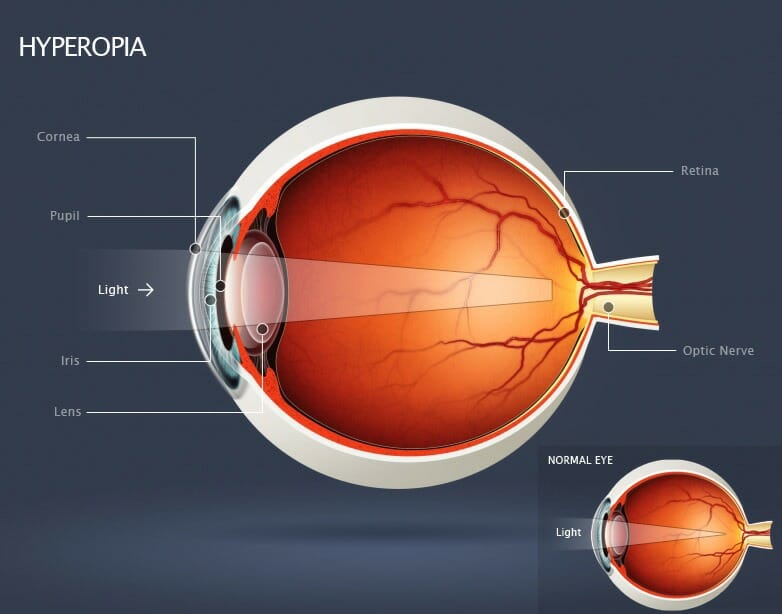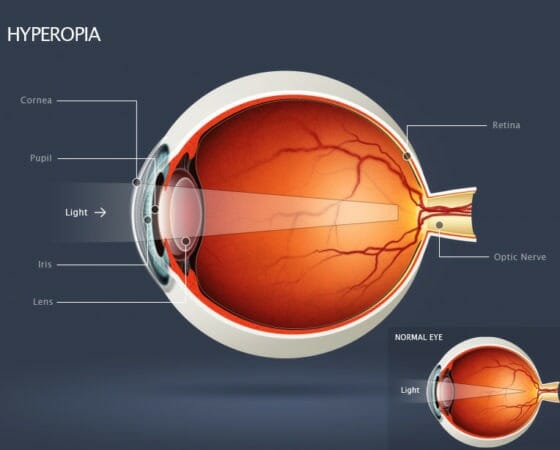Breaking Down One Common Eye Condition
When a person’s eyeball is not perfectly round, and instead, is shorter in one direction, then their ability to focus will be impaired, and conditions such as farsightedness can occur.

Farsightedness or Hyperopia
In the condition of hyperopia, the focus of light falls behind a person’s retina, due to an imbalance in the roundness of the eyeball itself, which is shorter than it is round in one direction. As a direct result, a person suffering from hyperopia experiences fuzzy vision concerning objects up close, while they remain able to see objects in the distance quite clearly.
As in the case of myopia, or nearsightedness, corrective treatments are available, and include refractive surgery on the intensive side, and contact lenses or glasses on the other end of the spectrum.
In cases of hyperopia, a person’s eye has to work to adjust focus concerning objects that are physically closer. This happens because the image they are looking at technically forms behind a person’s retina. While the subject’s eye is able to adjust to focus on objects that appear closer, the effort that is required of them in doing this is more than the average person. And this added effort leads to conditions including headaches, fatigue — all while the image itself becomes blurry.
Another possible cause of farsightedness happens when the eye itself is not quite powerful enough in terms of its ability to focus on an object. Corrective lenses are convex in nature. Fatigue ensues because the human eye was not designed to remain actively engaged on a constant basis, which is exactly the condition in hyperopia.
[Diagram Via: essilor.com.au]

